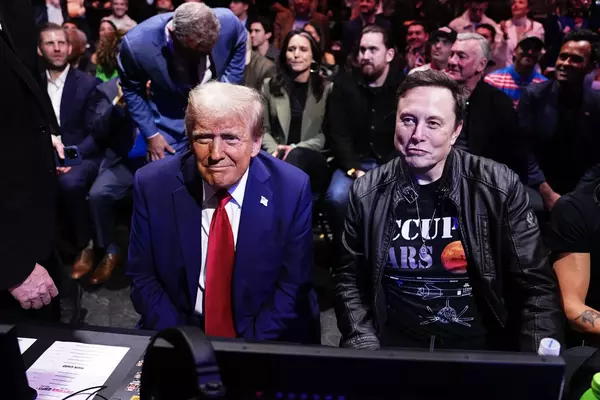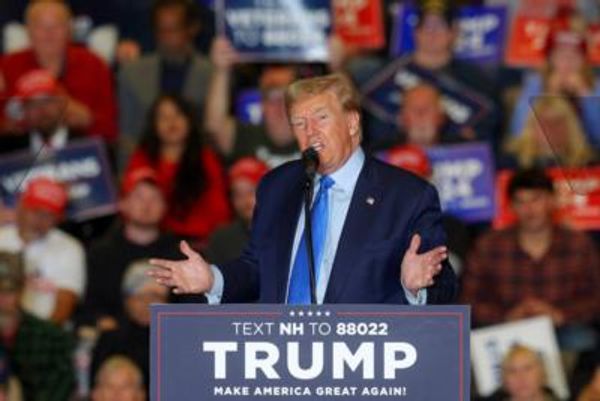
That the United States should lead the world is often taken for granted, at least in Washington, D.C. The country played that role for more than seven decades after World War II, and most Americans don’t want China to assume it. So it would be easy to think that if the American people vote Donald Trump out of office and bring in committed internationalist Joe Biden, the United States can just go back to “the head of the table,” as Biden’s recent Foreign Affairs article claimed. But global leadership is not an American entitlement.
Trump has broken with traditions of U.S. global leadership in a long and familiar list of ways. But while most of Washington’s allies (with a few notable exceptions, such as Israel and Saudi Arabia) are of the “Anybody but Trump” inclination, restoring a constructive U.S. role in the world will require much more than proclaiming that the United States is back and reverting to a pre-Trump playbook. The country must come to terms with fundamental shifts in its global position. Seen in historical perspective, the country has gone from being apart to atop and, now, to amid the world, and the transition requires some adjustments.
A Tarnished Model
The self-proclaimed “greatest democracy in the world” has been an erratic one since the late 1990s: in just more than two decades, the country has seen two presidents impeached, an election ultimately decided by the Supreme Court, an internationally controversial war in Iraq, and a financial crisis that sent shock waves around the world. In 2008, the country elected a globally popular Black senator to the presidency—only to lurch in a very different direction eight years later by electing a racist reality TV host who blames American allies for the country’s ills.
If we think of politics as we do monetary currencies—measuring stability by fluctuations within an equilibrium zone—why should the United States’ friends trust that even if Trump loses the 2020 election, American politics will stay within that political equilibrium zone for long? Instead, even close allies will have to hedge their bets, in case the United States shifts yet again in the following presidential election or even after the 2022 midterms.
The self-proclaimed “greatest democracy in the world” has been an erratic one since the late 1990s.
The country’s domestic policy performance has hardly made the United States a paragon of effective governance. The country ranks 27th of 31 Organization for Economic Cooperation and Development countries for social justice, reflecting policies that go back much further than Trump. Economic equality has been declining for more than 40 years, while “deaths of despair” are rapidly rising. Systemic racism tarnishes the country’s image abroad as a champion of democracy, justice, and the rule of law.
Such are the “pre-existing conditions of our body politic,” in the words of the Pulitzer Prize–winning author Viet Thanh Nguyen, and the U.S. response to the coronavirus pandemic has reflected them. No country has been perfect on COVID-19 (even New Zealand saw some community transmission after going more than three months without), but nowhere else is the government fighting so much within itself, with lockdown protesters flaunting guns inside legislative assemblies. The Centers for Disease Control and Prevention, once considered the gold standard for global disease detection and control, has been demeaned and weakened.
Systemic racism tarnishes the country’s image abroad as a champion of democracy.
By mid-July, more Americans had died from COVID-19 than in the Vietnam, Persian Gulf, Afghanistan, and Iraq wars combined; by late September, COVID-19 deaths had increased another 43 percent. Despite a continuing economic downturn, the country still struggles to move past political gamesmanship. Why would anyone in the world think that the United States could provide serious global leadership? Even Hans Morgenthau, the intellectual godfather of power politics, stressed the need to “concentrate . . . efforts upon creating a society at home which can . . . serve as a model for other nations to emulate.”
Think about it: if only 17 percent of Americans trust the government, why should others trust the United States?
Apart, Atop, Amid
For much of its first century and a half, the United States took advantage of its geographic distance from Europe and Asia to stay generally apart from the world. The country did not strictly isolate itself, but it selectively chose when and where to engage. After 1945, the United States sat mostly atop the world, as the dominant power in military, economic, ideological, and diplomatic terms—all the more so after the Soviet Union collapsed in 1991. Today the United States finds itself not apart or atop but rather amid the world, both shaping and being shaped by global events and forces.
Today’s world is no longer one in which any nation—whether the United States or China—can sit atop the others. Shifts in the relationships between states have made such domination less likely.
Great powers can most easily dominate when a single security threat unites a group of states, superseding other, possibly divergent interests. Take, for instance, the early nineteenth century, when the Concert of Europe emerged after the havoc of the Napoleonic period, or the Cold War, when the United States and the Soviet Union viewed each other as existential threats and countries sought protection from one or the other superpower. The twenty-first century has yet to furnish an overarching, shared security threat. The administration of President George W. Bush did not succeed in creating one with its post-9/11 global “war on terror.” China has become more aggressive and will likely remain the United States’ major competitor for decades, but the U.S. effort to stir up a “new China scare” has limited appeal to countries that want to maintain relations with both nations.
Today’s world is no longer one in which any nation can sit atop the others.
In today’s world of comparatively diffuse threats and interests, few states feel best served by a largely exclusive relationship with just one major power. During the Cold War, U.S. allies in Europe and Asia genuinely feared that the Soviet Union would either invade or try to undermine their political systems. Few harbor comparable fears today, and correspondingly few feel the need to choose sides. India and Australia have significant tensions with China but still cooperate with Beijing on matters of mutual interest. Even with all the support the Trump administration has given Israel, China is now that country’s largest Asian trading partner and an increasingly prominent investor in its economy. Saudi Arabia, another Trump favorite, may be turning to China for a nuclear weapons program.
During the Cold War and immediately after, the United States was an attractive protector because of its military preponderance and centrality to the international economy. Neither, though, provides comparable leverage today. While American military power remains crucial for extended deterrence through NATO and Indo-Pacific partnerships, close to 20 years of war in Afghanistan and Iraq, at a cost of more than $6 trillion, demonstrates the limited utility of military superiority for achieving strategic objectives. The U.S. share of global GDP—51 percent in 1951 and 25 percent in 1991—has declined to around 15 percent. And the sanctions the United States has imposed against Iran, Venezuela, and North Korea have inflicted heavy economic costs, but without producing compliance with U.S. demands.
Few states feel best served by a largely exclusive relationship with just one major power.
During the Cold War, the United States was able to lead in part by dividing the world into democracies and autocracies. But such ideological bifurcation has its limits. Democratic allies are the United States’ natural partners, and the strongest foreign policy to counter China, Russia, and other autocratic states remains a collective one. But the United States has always been inconsistent, if not hypocritical, in counting certain nondemocracies as allies or partners. Both during the Cold War and today, issues such as arms control, nuclear nonproliferation, climate change, and, as we now know, pandemics require the United States to cooperate with authoritarian regimes in order to achieve American objectives.
Indeed, the combination of COVID-19 and the ever-worsening climate crisis has driven home that we live amid rather than atop the world. Even if the United States had first-rate domestic policies on pandemic and climate change prevention, it would still be vulnerable to what others in the world do and don’t do. Climate change causes 400,000 deaths globally each year, compared with fewer than 16,000 from terrorism in 2018, and this rate is projected to increase by 50 percent by 2030. Building resilience against threats such as these has to be a globally shared enterprise.
Leadership, but Chastened
The United States remains enormously powerful, but being more amid than atop requires a chastened rather than restorationist approach to internationalism. Washington needs to recognize the global leadership roles others can and must play. In the future, there will be very few issues on which the United States plays a solo leadership role and some on which others are better suited to take the lead. Public opinion within the United States supports such an approach, with 68 percent preferring that the United States share leadership rather than dominate.
A Biden administration cannot just return to multilateral agreements that Trump has abandoned, such as the Paris climate accord and the Iran nuclear deal. It needs to push them further. Even if Trump had not reneged on the Paris agreement and all countries were on track to meet their pledges (which few are), greenhouse gas emissions would still be close to double what they should be. A Biden administration should therefore not only rejoin but push for a Paris-plus, which would make signatories’ commitments more binding and enforceable. Biden can build on the energy and enthusiasm of his party’s progressive wing in order to go big in dealing with climate change. The recent Pew Research Center polls suggest that he would have the support of close to two-thirds of the American public in doing so.
As for the Iran nuclear deal, its original intent was both to address nuclear proliferation and to establish a basis for working out other tensions in the Iranian-U.S. relationship over time. Now the deal’s sunset provisions are closer to expiration, and geopolitical tensions have intensified. Rejoining the deal won’t be enough to solve these problems: the participants will need new agreements that are stronger and up to date. But Tehran is understandably wary about the durability of any American commitment, the Europeans are furious about the secondary sanctions Trump has imposed on them, and Russia and China are exploiting the situation despite the fundamental interest they share in a non-nuclear Iran. These circumstances will require an even greater collaborative effort from the P5+1 than before.
In the future, there will be very few issues on which the United States plays a solo leadership role.
A chastened internationalism would require reassessing the state of U.S. alliances. The United States should neither automatically maintain nor precipitously end its longtime commitments, but it does need to recalibrate them based on current national interests. The transatlantic relationship is the perfect place to start. At the end of the Cold War, Europe still seemed to need the United States to remain in charge of its security: Germany’s neighbors feared the country’s unification, and violence convulsed the former Yugoslavia. But the time has come for the United States to actively support European Union efforts to deliver on the promise of a European defense capability. Such efforts should not be seen as a threat to NATO. In fact, cooperation between NATO and the EU, along with a strengthening of U.S.-EU ties, will be critical to their success.
The United States should view NATO as an instrument for coordinating security policies with Canada and Europe, not as a means of dominating its allies. A true rebalancing of U.S. foreign policy toward Asia depends on a stronger Europe, able to do more in its own backyard. The United States should play more of a supporting role over time, rather than having to take charge, as it did, for example, in the Western Balkans in the 1990s.
Within the Indo-Pacific, regional allies need reassurance of American presence and commitment, but they have their own interests in relations with China and are resistant to being pressured into with-us-or-with-them alignments. Japan, for its part, conducts bilateral summits with China. Intraregional agreements—between Australia and India, with Australia and Japan, and within the Association of Southeast Asian Nations, for example—play an ever larger part in regional security. U.S. policy needs to work with, not against, these currents, reinforcing other countries’ interests in restraining China rather than pressuring for bipolarization of the region.
A Biden administration cannot just return to multilateral agreements that Trump has abandoned.
In keeping a more realistic vision of its leadership, the United States can and should recalibrate its role in the Middle East, including relations with Saudi Arabia, and more generally adjust to a reduced expectation of shaping the region’s future. And in Afghanistan, it should commit to a high-level, regional, diplomatic initiative, engaging Pakistan, India, Russia, China, Saudi Arabia, and Iran, all of whom have their own favored groups but also a lot at risk once the United States gets off the frontlines. Success is never guaranteed, but such strategic diplomacy has a better chance of working than making the United States’ longest war in history that much longer.
The United States can play a global leadership role on COVID-19 that is comparable to its twentieth-century one but appropriate to the twenty-first by collaborating with others and allowing others to take the lead as their ideas and capacity warrant. The World Health Organization needs reform, but rather than taking a punitive approach, the United States should follow the German and French lead in increasing funding, building broad support for stronger and more independent WHO authority, and pushing constructively for change. Moreover, after years telling others to learn from it, the United States would do well to learn from others. A liberal government in New Zealand, a conservative government in Australia, a centrist government in Germany, a congenitally weak government in Italy, and any number of others, such as in South Korea and Taiwan, have done far better than the United States. While policies can’t be surgically transplanted from one country to another, lessons can be learned. When this pandemic abates, U.S. officials should immediately make fact-finding missions to those more successful countries, so that the United States will be better prepared for the next global health crisis.
While the United States won’t always be—and shouldn’t always be—at the head of the table, the pandemic has shown what happens when Washington isn’t even at the table. But other nations are not just waiting for Godot. The United States needs to abandon any sense of entitlement—and do what it takes at home and abroad to be a leader amid this twenty-first-century world.







